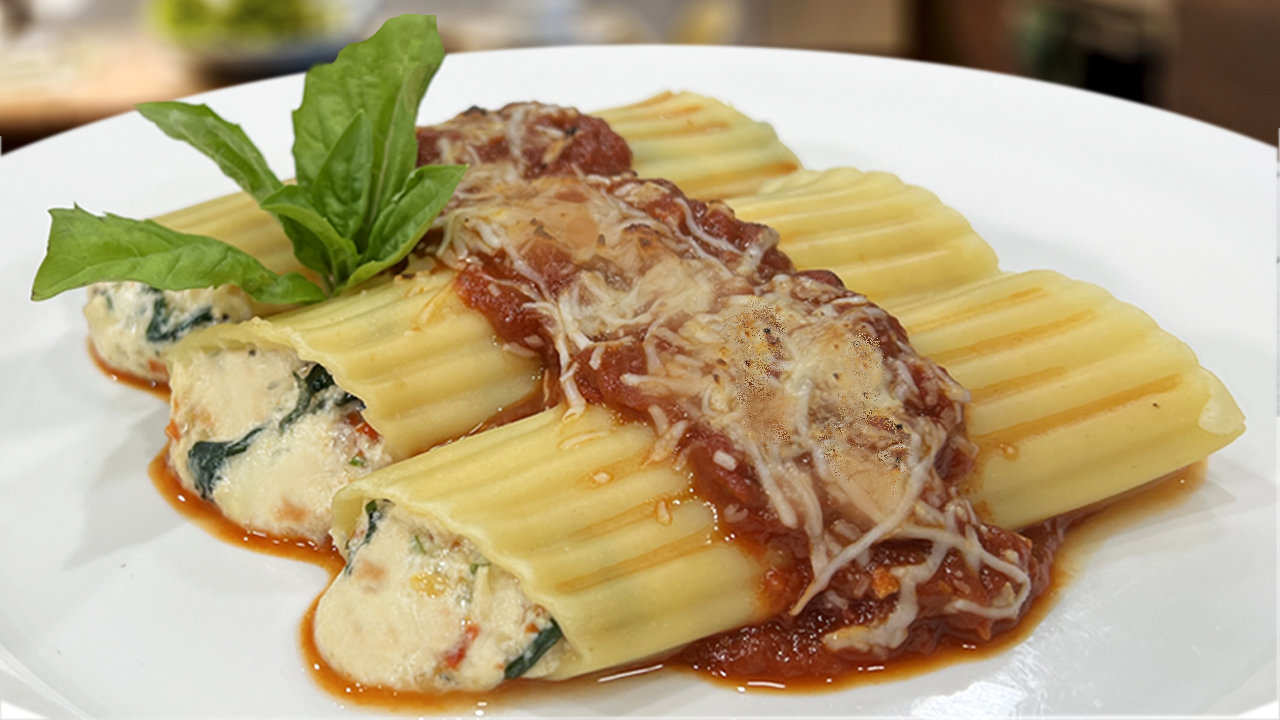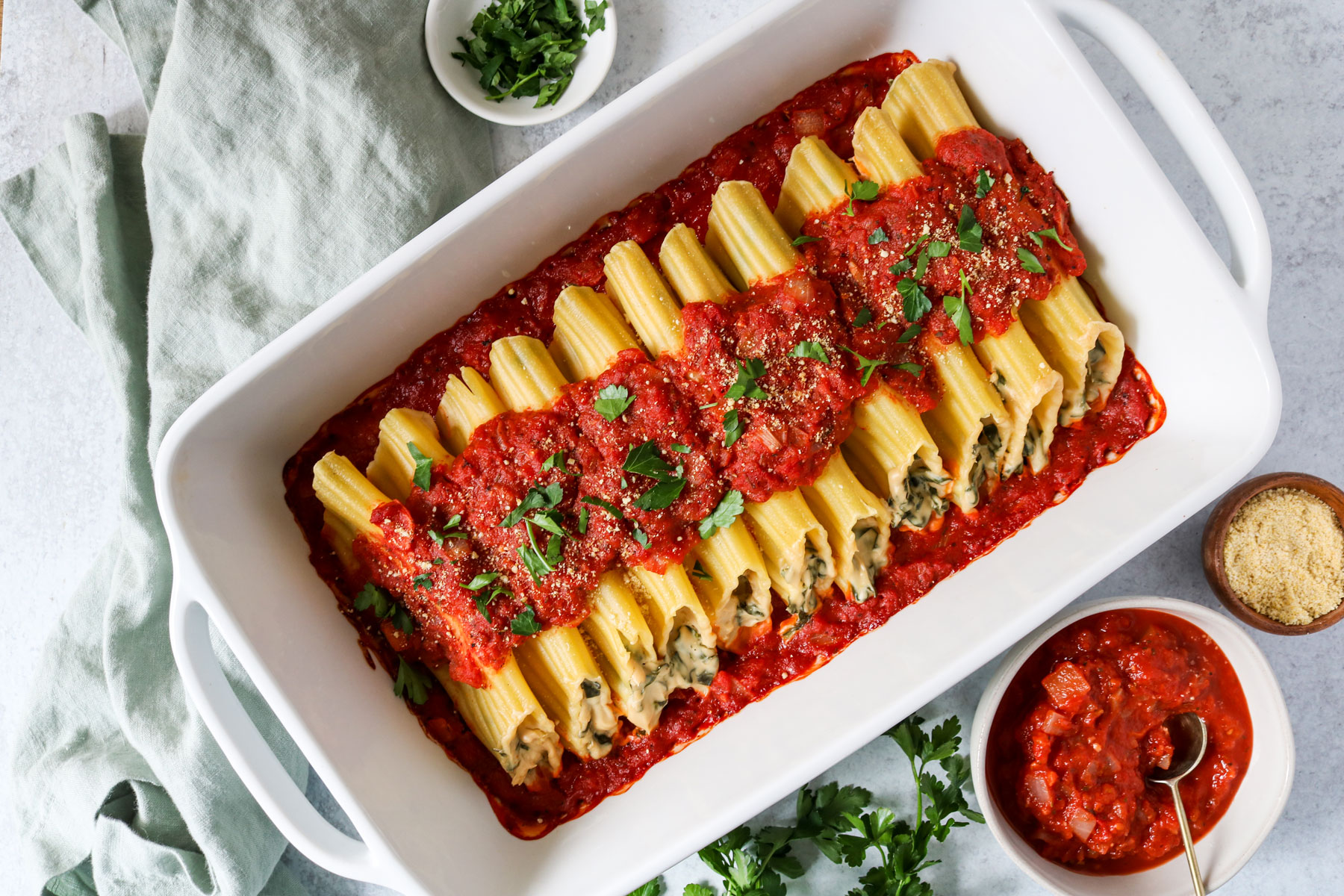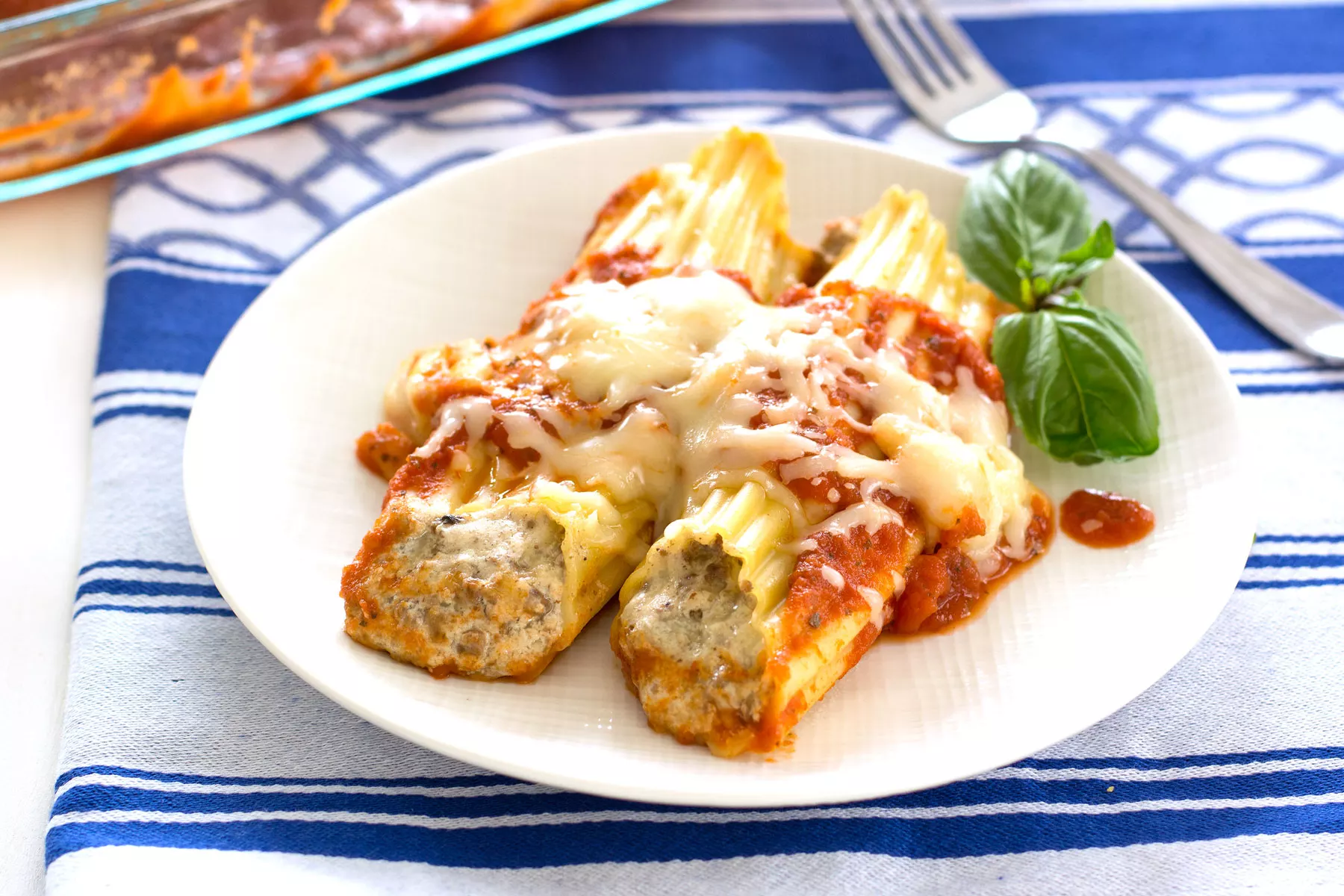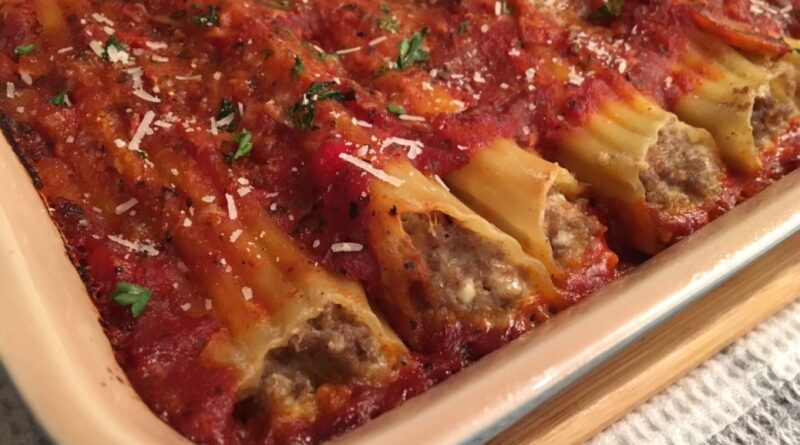Manicotti: An Exquisite Delight of Rich Flavor and Culinary Elegance
Contents
- 1 The History of Manicotti: A Culinary Tradition
- 2 Author
Manicotti, a cherished Italian pasta dish, embodies the essence of rich flavor and culinary elegance. These large, tube-shaped pasta shells are typically stuffed with a delectable mixture of cheeses, meats, or vegetables, then baked in a savory tomato sauce and topped with melted cheese. This article explores the history, preparation techniques, variations, and the global appeal of manicotti, highlighting why it remains an exquisite delight in the world of gourmet cuisine.
The History of Manicotti: A Culinary Tradition

The origins of manicotti can be traced back to Italy, where pasta has been a culinary staple for centuries. The name “manicotti” translates to “little sleeves” in Italian, aptly describing the pasta’s shape. While the exact origins are unclear, manicotti is believed to have evolved from traditional Italian stuffed pasta dishes, such as cannelloni and pasta al forno.
Manicotti gained popularity in the United States in the mid-20th century, particularly among Italian-American communities. Its versatility and comforting flavors made it a beloved dish for family gatherings and special occasions. Today, manicotti is enjoyed worldwide, celebrated for its rich flavors and elegant presentation.
The Art of Making Manicotti: Techniques and Tips
Creating perfect manicotti requires attention to detail and a love for the craft of cooking. While it may seem complex, the process is deeply rewarding and results in a dish that is both comforting and sophisticated.
Key Ingredients and Preparation Steps
- Pasta Preparation: Traditionally, manicotti is made with fresh pasta sheets that are rolled and cut into large rectangles. These rectangles are then boiled briefly to soften them for filling. Alternatively, pre-made dried manicotti shells can be used, which are boiled until al dente before stuffing.
- Filling: The filling can vary widely, but a classic combination includes ricotta cheese, mozzarella, Parmesan, eggs, and fresh herbs like parsley or basil. For added flavor, ground meats such as beef, pork, or Italian sausage can be incorporated. Spinach or other vegetables can also be added for a vegetarian option.
- Stuffing the Manicotti: Once the pasta is prepared and the filling is mixed, the filling is carefully spooned or piped into the pasta shells. It’s important to handle the pasta gently to avoid tearing.
- Saucing: A rich tomato sauce, often made with garlic, onions, and herbs, is spread in the bottom of a baking dish. The stuffed manicotti are then placed on top of the sauce, and more sauce is poured over them to ensure they remain moist during baking.
- Baking: The manicotti is baked in the oven at 375°F (190°C) for about 30-40 minutes. In the last 10 minutes, additional mozzarella or Parmesan cheese can be sprinkled on top to create a golden, bubbly crust.
Varieties of Manicotti: Exploring Different Flavors
One of manicotti’s greatest strengths is its versatility. From classic Italian recipes to innovative contemporary versions, the possibilities are endless.
Classic Manicotti Varieties
- Ricotta and Spinach Manicotti: This traditional filling combines creamy ricotta cheese with sautéed spinach, seasoned with garlic, nutmeg, and fresh herbs. It’s a light yet flavorful option often topped with a simple marinara sauce.
- Meat-Filled Manicotti: Ground beef or sausage mixed with ricotta and mozzarella cheese creates a hearty and satisfying filling. This version is typically paired with a rich, meaty tomato sauce.
- Four-Cheese Manicotti: For cheese lovers, a mixture of ricotta, mozzarella, Parmesan, and provolone cheeses offers a decadent and gooey filling. A béchamel sauce can be added for an extra layer of richness.
Contemporary Twists on Manicotti
- Seafood Manicotti: A luxurious option featuring a filling made from crab, shrimp, or lobster mixed with ricotta and fresh herbs. A creamy Alfredo or white wine sauce pairs beautifully with this variation.
- Vegetable Manicotti: Perfect for vegetarians, this version includes a filling made from roasted vegetables like zucchini, eggplant, and bell peppers, combined with ricotta and mozzarella. A light tomato or pesto sauce complements the earthy flavors.
- Pumpkin and Sage Manicotti: Ideal for autumn, this innovative filling combines roasted pumpkin or butternut squash with ricotta and sage, offering a sweet and savory balance. A brown butter sauce enhances the dish’s warm, comforting flavors.
The Elegance of Manicotti: A Dish for Every Occasion

Manicotti’s elegance and versatility make it suitable for various occasions, from casual family dinners to sophisticated gatherings.
Manicotti in Fine Dining
In fine dining establishments, manicotti is often elevated with gourmet ingredients and artistic presentation. Chefs use high-quality cheeses, fresh herbs, and artisanal pasta to create luxurious versions of this classic dish. The meticulous preparation and beautiful plating turn manicotti into a culinary masterpiece.
Manicotti at Home: Comfort and Creativity
Despite its presence in high-end restaurants, manicotti is also a comforting and accessible dish to make at home. Homemade manicotti allows for endless creativity, as cooks can experiment with different fillings and sauces. The process of making manicotti can be a therapeutic and enjoyable activity, bringing families together in the kitchen.
Pairing Manicotti: Complementing Flavors
Pairing manicotti with the right beverages and side dishes enhances the overall dining experience. Here are some suggestions:
Wine Pairings
- White Wines: Light, crisp white wines like Pinot Grigio or Sauvignon Blanc complement the delicate flavors of seafood or vegetable manicotti.
- Red Wines: Heavier meat-filled manicotti pairs well with medium-bodied red wines like Chianti or Merlot.
Side Dishes
- Salads: A fresh, crisp salad with a light vinaigrette can balance the richness of manicotti, providing a refreshing contrast.
- Bread: Crusty Italian bread is perfect for soaking up any leftover sauce, making it a perfect accompaniment to manicotti.
- Vegetables: Roasted or steamed vegetables add color, texture, and additional flavors to the meal.
Manicotti: A Global Phenomenon
While manicotti is quintessentially Italian, it has been embraced worldwide, with each culture adding its unique touch.
Manicotti in Modern Cuisine
In contemporary cuisine, manicotti has been adapted to suit various dietary preferences. Gluten-free and vegan manicotti options are now widely available, ensuring everyone can enjoy this classic dish.
Cultural Fusion
Fusion cuisine has given rise to innovative manicotti dishes that blend flavors from different culinary traditions. For example, an Asian-inspired manicotti might feature fillings like tofu and bok choy, while a Mexican twist could include ingredients like black beans and corn with a spicy tomato sauce.
Conclusion: Manicotti’s Timeless Appeal

Manicotti remains a beloved dish for many reasons. Its versatility, ability to adapt to various flavors and ingredients, and its elegance make it a favorite in both home kitchens and fine dining establishments. The process of making manicotti, though requiring time and effort, is a rewarding experience that results in a truly delightful gourmet dish. Whether enjoyed as a comforting jpslot homemade meal or a sophisticated restaurant offering, manicotti’s charm and culinary excellence continue to captivate food lovers around the world.
In conclusion, manicotti is more than just a dish; it is a testament to the beauty of culinary creativity and tradition. Its enduring appeal lies in its ability to bring joy and satisfaction with every bite. So, the next time you savor a plate of manicotti, take a moment to appreciate the craftsmanship and passion that go into creating this exquisite delight of rich flavor and culinary elegance.

